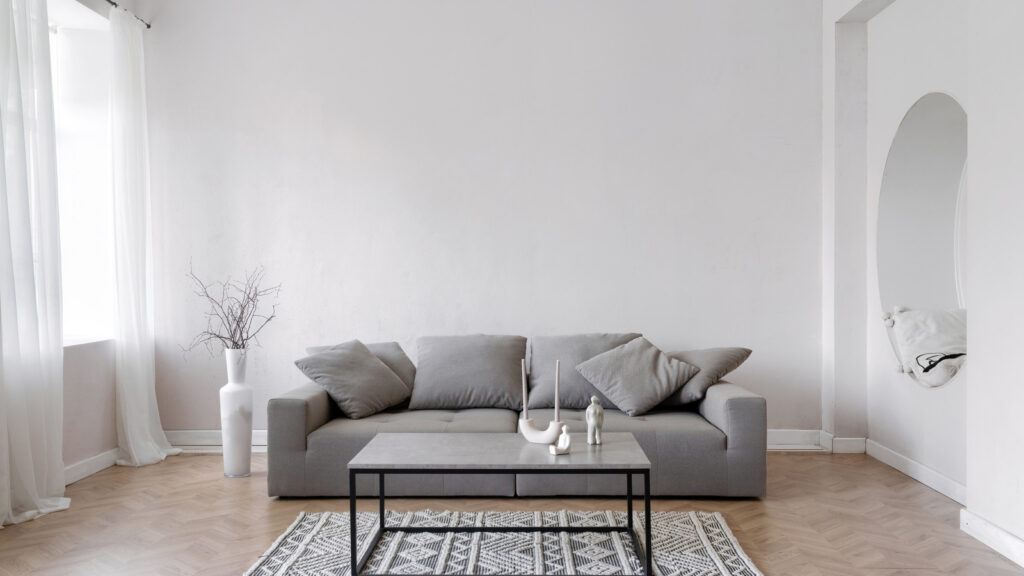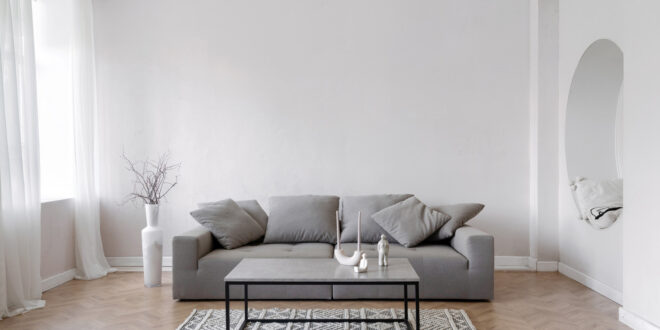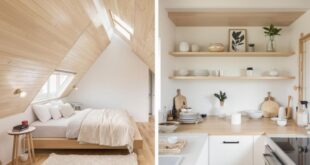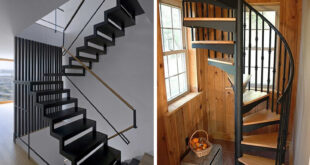
Embrace Simplicity: Creating Your Minimalist Home
In an increasingly complex world, the allure of a minimalist home is stronger than ever. More than just a design trend, minimalism is a philosophy that prioritizes intentionality, functionality, and a focus on what truly matters. It’s about decluttering not just your physical space, but also your mind, leading to a more peaceful and fulfilling life. This article explores the core principles of minimalist home design, offering practical tips and inspiration for creating a space that reflects your values and enhances your well-being.
Understanding the Minimalist Philosophy
Before diving into the aesthetics, it’s crucial to understand the underlying philosophy of minimalism. It’s not about stark white walls and empty rooms, but about curating a space filled only with items that serve a purpose or bring you joy. This conscious approach to consumption and ownership can lead to significant lifestyle changes, reducing stress, increasing productivity, and fostering a deeper appreciation for what you already have. The goal of a minimalist home is to create a sanctuary, a place where you can relax, recharge, and focus on what’s truly important.
Decluttering: The First Step Towards a Minimalist Home
Decluttering is the cornerstone of creating a minimalist home. It’s the process of letting go of items that no longer serve a purpose or bring you joy. This can be a challenging but ultimately rewarding process. Start by tackling one area at a time, such as a closet, drawer, or bookshelf. Ask yourself the following questions about each item:
- Have I used this in the past year?
- Does this item bring me joy?
- Is this item essential for my daily life?
If the answer to all three questions is no, it’s time to let it go. Consider donating, selling, or responsibly disposing of unwanted items. Remember, decluttering is not just about getting rid of things; it’s about creating space for what truly matters in your life. As you declutter, you’ll begin to appreciate the beauty of empty space and the freedom that comes with owning less. Transforming your living space into a minimalist home begins with this crucial step.
Essential Elements of Minimalist Home Design
Once you’ve decluttered, you can begin to focus on the design elements that define a minimalist home:
Neutral Color Palette
A neutral color palette is a hallmark of minimalist design. Think whites, grays, beiges, and soft pastels. These colors create a sense of calm and serenity, providing a blank canvas for your furniture and accessories. While neutral colors are dominant, you can incorporate pops of color through artwork, plants, or textiles. The key is to use color sparingly and intentionally. A well-chosen accent color can add visual interest without disrupting the overall sense of tranquility that a minimalist home provides.
Clean Lines and Simple Shapes
Minimalist furniture is characterized by clean lines, simple shapes, and a lack of ornamentation. Avoid overly ornate pieces or those with excessive detailing. Instead, opt for furniture that is functional, comfortable, and aesthetically pleasing. Consider pieces with geometric shapes and streamlined silhouettes. The focus should be on quality over quantity, choosing well-made pieces that will last for years to come. Every element in a minimalist home should contribute to the overall sense of simplicity and order.
Natural Light
Natural light is essential for creating a bright and airy minimalist home. Maximize natural light by keeping windows clean and free of obstructions. Use sheer curtains or blinds to filter light without blocking it completely. Consider adding mirrors to reflect light and make the space feel larger. Natural light not only enhances the aesthetic appeal of a room but also has a positive impact on mood and well-being.
Functional Furniture
Every piece of furniture in a minimalist home should serve a purpose. Avoid cluttering your space with unnecessary items. Choose furniture that is both functional and aesthetically pleasing. Multifunctional furniture, such as a sofa bed or a storage ottoman, is a great way to maximize space and minimize clutter. Prioritize quality and durability when selecting furniture, opting for pieces that will stand the test of time. A well-curated selection of functional furniture is key to creating a minimalist home that is both stylish and practical.
Minimalist Decor
When it comes to decor, less is more. Choose a few carefully selected pieces that reflect your personality and add visual interest to the space. Consider artwork, plants, or sculptural objects. Avoid cluttering surfaces with knick-knacks or decorative items that don’t serve a purpose. The goal is to create a space that is both visually appealing and uncluttered. Think about the story you want to tell with your decor and choose pieces that are meaningful and evocative. A minimalist home is a reflection of your personal style, expressed through carefully chosen and intentionally placed objects.
Practical Tips for Creating a Minimalist Home
Here are some practical tips to help you create your own minimalist home:
- Start small: Don’t try to declutter your entire home at once. Start with one area and gradually work your way through the rest of the house.
- Be ruthless: Be honest with yourself about what you truly need and use. Don’t be afraid to let go of items that are holding you back.
- Find a place for everything: Everything in your home should have a designated place. This will help you stay organized and prevent clutter from accumulating.
- Embrace storage solutions: Use storage solutions such as baskets, bins, and shelves to keep your belongings organized and out of sight.
- Shop intentionally: Before buying anything new, ask yourself if you truly need it and if it will add value to your life.
- Maintain regularly: Once you’ve decluttered, make it a habit to declutter regularly to prevent clutter from accumulating again.
The Benefits of a Minimalist Home
Living in a minimalist home offers a wide range of benefits, including:
- Reduced stress: A clutter-free environment can reduce stress and anxiety.
- Increased productivity: A minimalist home can help you focus and be more productive.
- Improved well-being: A minimalist lifestyle can lead to a greater sense of peace and contentment.
- More time: Spending less time cleaning and organizing allows you to focus on what truly matters.
- Financial savings: Buying less stuff can save you money and reduce your environmental impact.
Minimalism Beyond the Home
The principles of minimalism can be applied to other areas of your life as well, such as your wardrobe, your digital life, and your relationships. By embracing minimalism in all aspects of your life, you can create a more intentional, fulfilling, and meaningful existence. The journey to a minimalist home is often a gateway to a more minimalist lifestyle, impacting everything from your spending habits to your relationships. It’s about consciously choosing what you bring into your life and letting go of what no longer serves you.
Examples of Minimalist Home Decor
To inspire your own minimalist home journey, consider these examples of minimalist decor:
- Scandinavian Minimalism: Characterized by light wood, natural textures, and a focus on functionality.
- Modern Minimalism: Emphasizes clean lines, geometric shapes, and a monochromatic color palette.
- Japanese Minimalism: Focuses on simplicity, natural materials, and a connection to nature.
Each of these styles offers a unique take on the minimalist aesthetic, allowing you to find the perfect fit for your personal taste and lifestyle. Exploring different styles can provide inspiration and help you define your own vision for a minimalist home.
Creating a Minimalist Home on a Budget
You don’t need to spend a fortune to create a minimalist home. In fact, minimalism can actually save you money in the long run. Focus on decluttering what you already have and repurposing items instead of buying new ones. Shop at thrift stores, flea markets, and online marketplaces for affordable furniture and decor. DIY projects can also be a great way to create unique and budget-friendly minimalist pieces. The key is to be resourceful and creative, focusing on quality over quantity. Remember, a minimalist home is about intentionality, not extravagance.
Ultimately, creating a minimalist home is a personal journey. There is no one-size-fits-all approach. The key is to find what works best for you and to create a space that reflects your values and enhances your well-being. Embrace the principles of simplicity, functionality, and intentionality, and you’ll be well on your way to creating a minimalist home that you love. [See also: Decluttering Your Home for a Fresh Start] [See also: Small Space Living: Maximizing Functionality and Style]
 Nimila
Nimila




